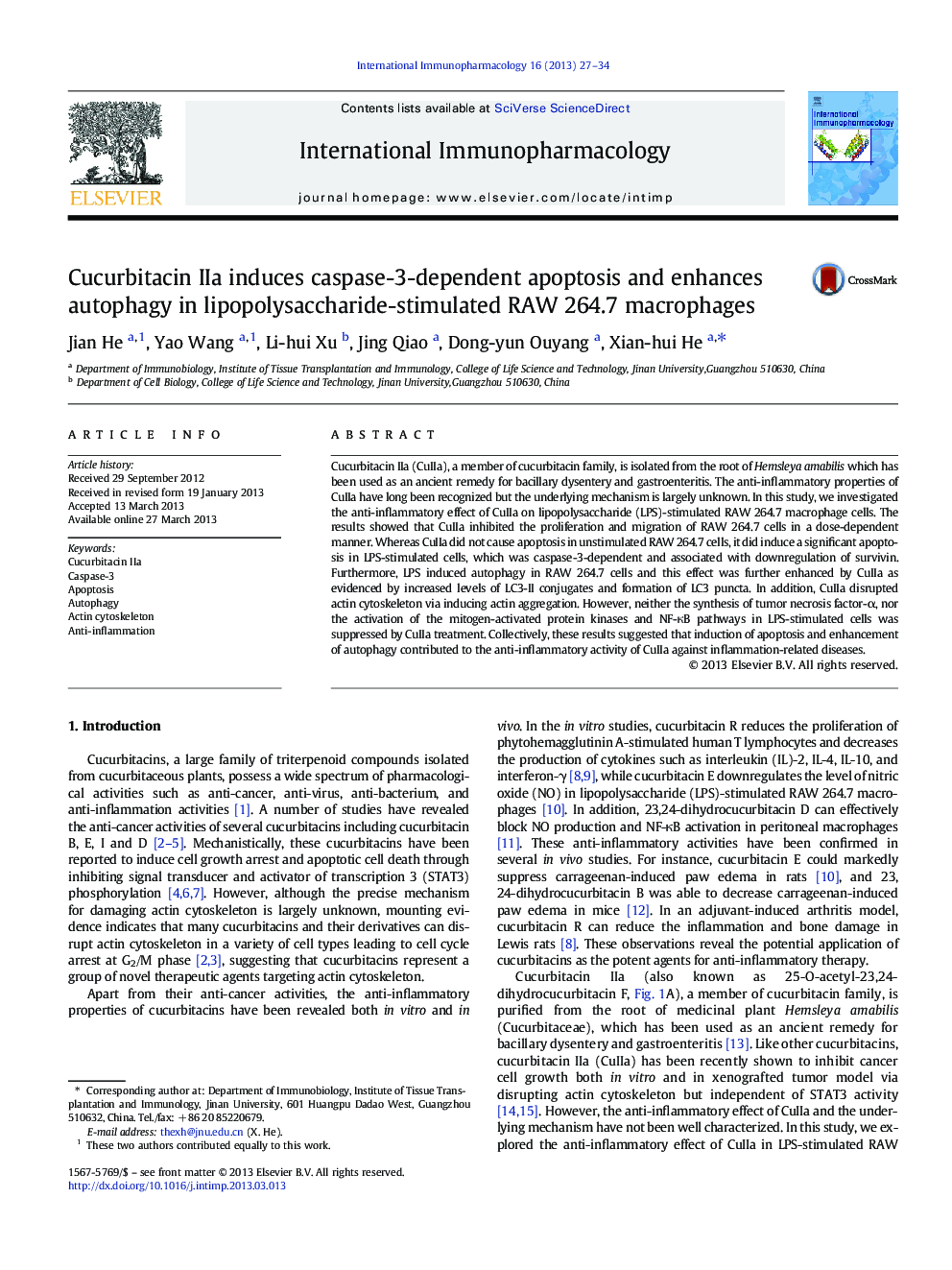| Article ID | Journal | Published Year | Pages | File Type |
|---|---|---|---|---|
| 2541102 | International Immunopharmacology | 2013 | 8 Pages |
•CuIIa inhibited the proliferation and migration of RAW 264.7 cells.•CuIIa induced a significant apoptosis in LPS-stimulated cells.•LPS-induced autophagy in RAW 264.7 was enhanced by CuIIa.•Neither MAPKs nor NF-kappaB pathways in LPS-stimulated cells were suppressed by CuIIa.
Cucurbitacin IIa (CuIIa), a member of cucurbitacin family, is isolated from the root of Hemsleya amabilis which has been used as an ancient remedy for bacillary dysentery and gastroenteritis. The anti-inflammatory properties of CuIIa have long been recognized but the underlying mechanism is largely unknown. In this study, we investigated the anti-inflammatory effect of CuIIa on lipopolysaccharide (LPS)-stimulated RAW 264.7 macrophage cells. The results showed that CuIIa inhibited the proliferation and migration of RAW 264.7 cells in a dose-dependent manner. Whereas CuIIa did not cause apoptosis in unstimulated RAW 264.7 cells, it did induce a significant apoptosis in LPS-stimulated cells, which was caspase-3-dependent and associated with downregulation of survivin. Furthermore, LPS induced autophagy in RAW 264.7 cells and this effect was further enhanced by CuIIa as evidenced by increased levels of LC3-II conjugates and formation of LC3 puncta. In addition, CuIIa disrupted actin cytoskeleton via inducing actin aggregation. However, neither the synthesis of tumor necrosis factor-α, nor the activation of the mitogen-activated protein kinases and NF-κB pathways in LPS-stimulated cells was suppressed by CuIIa treatment. Collectively, these results suggested that induction of apoptosis and enhancement of autophagy contributed to the anti-inflammatory activity of CuIIa against inflammation-related diseases.
